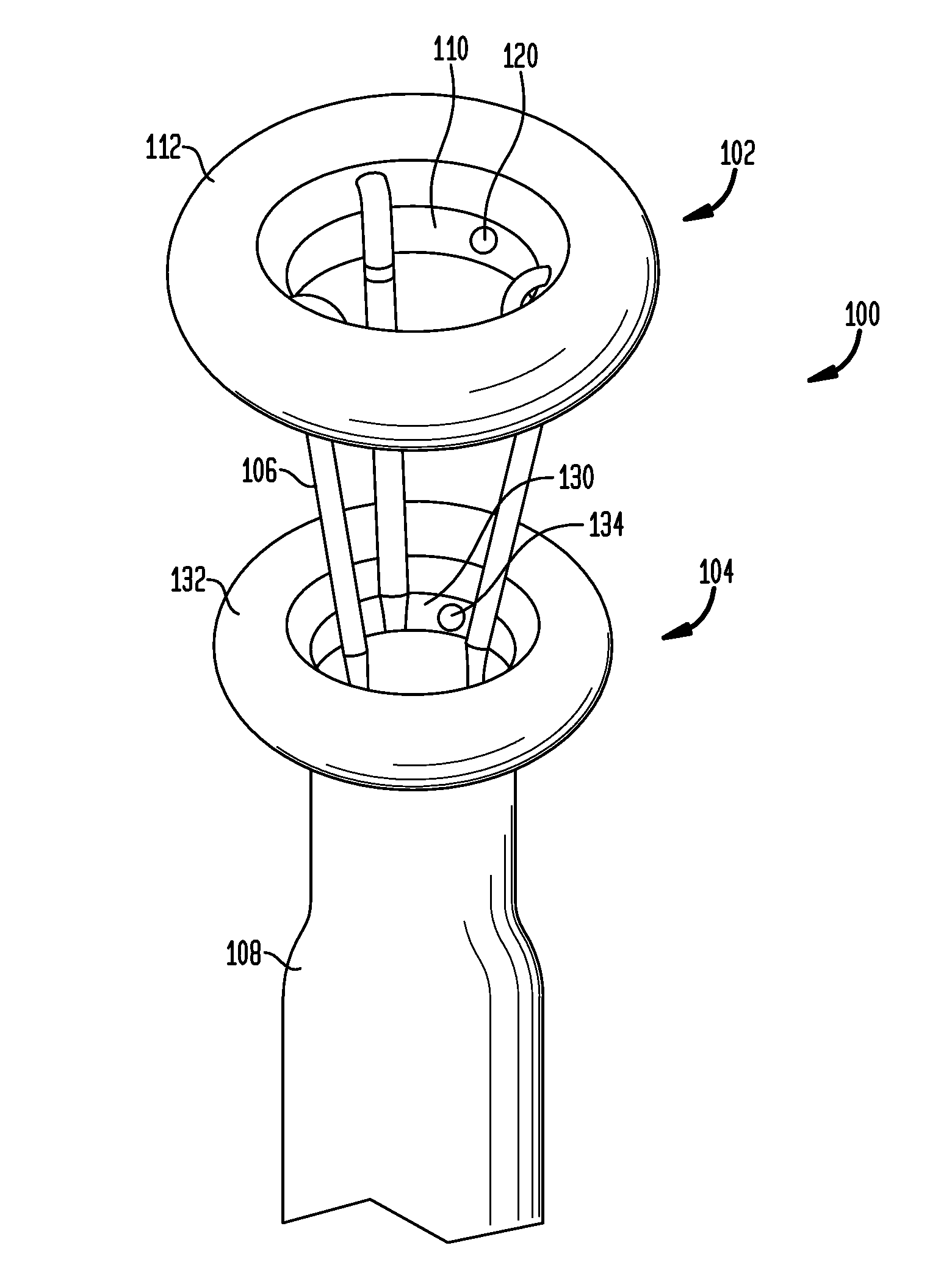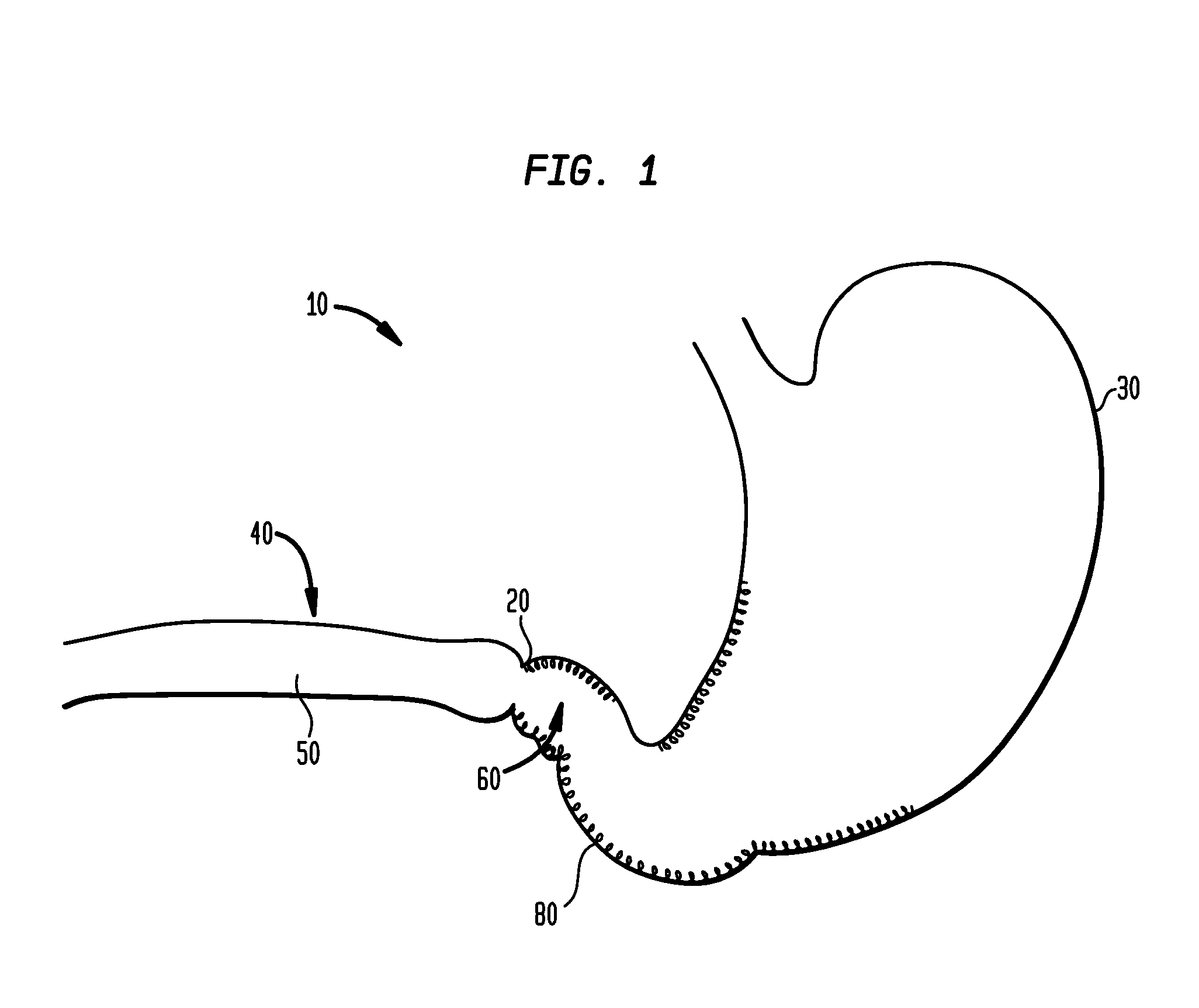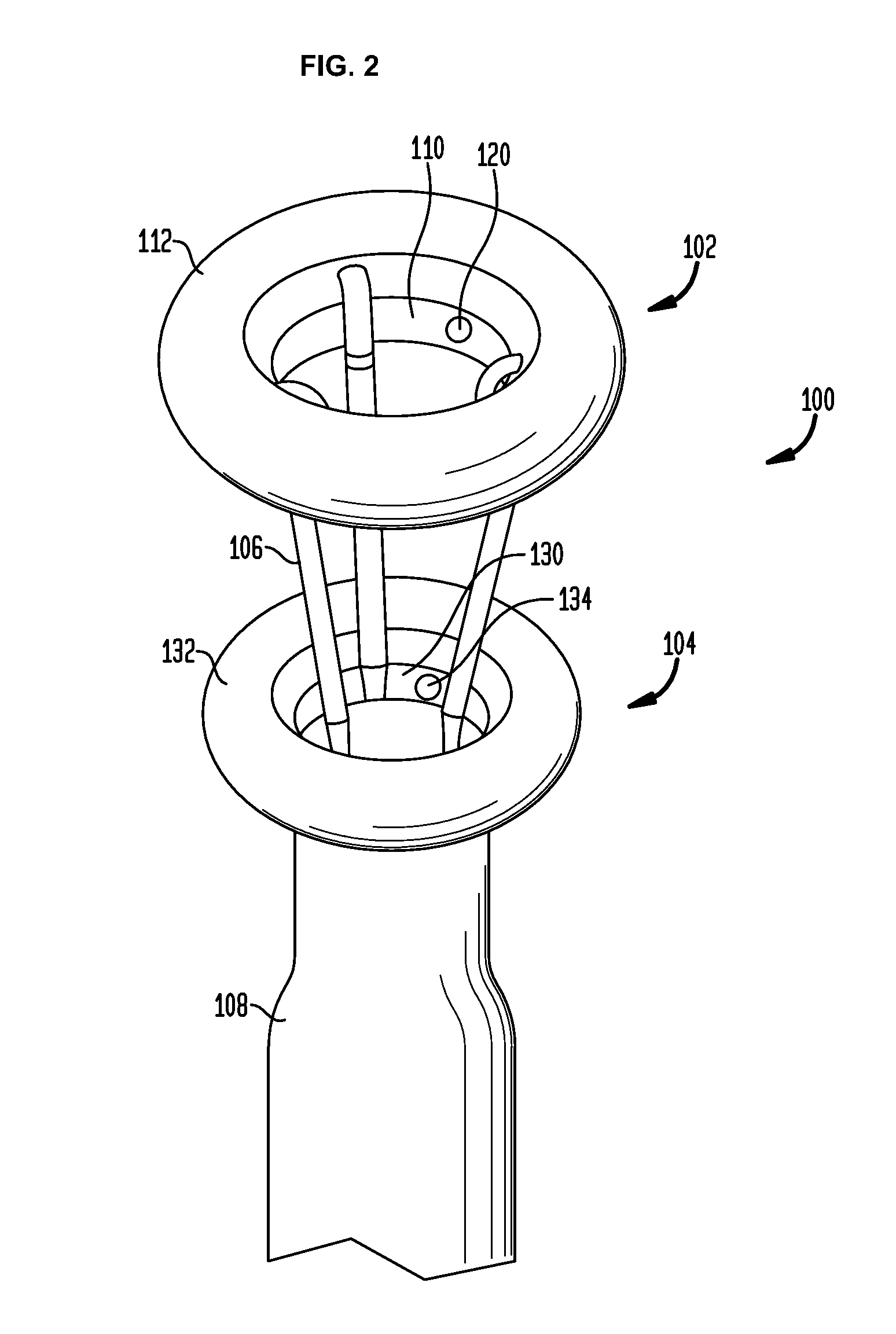Systems and methods for treating obesity and type 2 diabetes
- Summary
- Abstract
- Description
- Claims
- Application Information
AI Technical Summary
Benefits of technology
Problems solved by technology
Method used
Image
Examples
Embodiment Construction
[0065]In the present invention, systems, devices and methods are disclosed for treating and controlling obesity and / or type II diabetes. In particular, the systems and methods of the present invention provide an internal bypass of a proximal portion of the small intestines to inhibit contact between chyme and the bypassed small intestinal walls while allowing natural peristalsis to occur. The present invention is related to co-pending patent application Ser. No. 61 / 123,472 filed Apr. 9, 2008; patent application Ser. No. 61 / 206,048 filed Jan. 27, 2009; patent application Ser. No. 12 / 420,219 filed Apr. 8, 2009; patent application Ser. No. 12 / 384,889 filed Apr. 9, 2009; patent application Ser. No. 12 / 384,890 filed Apr. 9, 2009 and patent application Ser. No. 12 / 384,898 filed Apr. 9, 2009, the full disclosures of which were previously incorporated herein by reference.
[0066]Diabetic foot ulcers are one of the major complications of diabetes mellitus. Foot ulcers occur in 15% of all patie...
PUM
 Login to View More
Login to View More Abstract
Description
Claims
Application Information
 Login to View More
Login to View More - R&D
- Intellectual Property
- Life Sciences
- Materials
- Tech Scout
- Unparalleled Data Quality
- Higher Quality Content
- 60% Fewer Hallucinations
Browse by: Latest US Patents, China's latest patents, Technical Efficacy Thesaurus, Application Domain, Technology Topic, Popular Technical Reports.
© 2025 PatSnap. All rights reserved.Legal|Privacy policy|Modern Slavery Act Transparency Statement|Sitemap|About US| Contact US: help@patsnap.com



